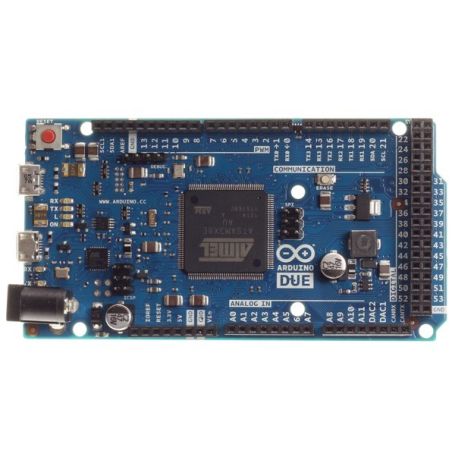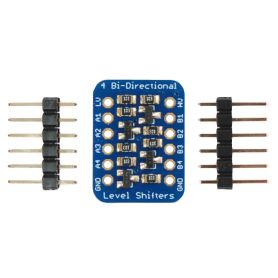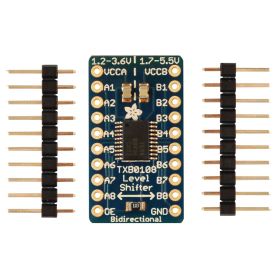Arduino Due
Arduino Due - an Arduino power 10!
Payments are secured by LyraCollect, a French payment collection company.
It is possible to delivered to your home, to a pick-up point or picked up by appointment at MCHobby
We prepare, pack and ship your orders with great respect and care.
Arduino-DUE : an Arduino developping lot of power for your project requiring processing power
Spend your Arduino projects in TURBO mode with Arduino DUE a high-speed and high-power platform!
This Arduino Due is ideal for those wishing to realize projects requiring high computing power. It will be suitable, for example, for remotely controlled drones. They require the processing of numerous data coming from numerous sensors to be able to fly. The number of treatment cycles per second should be as high as possible.
It will also be suitable for "audio player" projects using the internal Digital-to-Analog converter (Arduino.cc page).
The Arduino Due will offer students the opportunity to learn more about the inner workings of an ARM processor ... this knowledge can be acquired at an affordable price and in a much simpler way than before.
For scientific projects that need to capture a lot of data quickly and precisely, Arduino Due will offer a platform to create open source tools much more advanced than what could exist until today.
This new platform will offer a major breakthrough to the community focusing on the construction of digital objects (3D printers, Laser cutter, CNC machine). Due will allow greater precision to be achieved, at higher speed and with less component than in the past.
DUE = 3.3v!
The main difference between a DUE and an Arduino Uno (or Mega) is the operating voltage.
On a DUE the inputs/outputs operates at 3.3v while a UNO/Mega operates at 5v.
This doesn't prevent you from using your 5 Volt assemblies (ex L298, L293) with a DUE ... you just need to use a Level Shifter (see accessory on the product sheet).
A Level Shifter is a circuit that operates in low voltage on one side and in high voltage on the other.
His job is to "translate" the logic levels while respecting the respective supply voltages.
In our case, the low voltage stage is 3.3v (the DUE or a Raspberry Pi) and the high voltage stage is 5v (allowing to order L293D, L298, ...).
So just insert the Level Shifter between the 3.3v and 5v part ... it's simple and effective.
We have two bi-directional level shifter (ie they work in both directions in "reading" and in "writing" of signals).
- Bidirectional 8-bit Level Shifter
- Bidirectional 4-bit Level Shifter (also supporting conversion for an I2C bus).
Technical details
- The board is equipped with an Atmel SAM3X8E processor (datasheet), based on an ARM Cortex M3 32 bit architecture clocked at 84MHz.
- A USB 2.0 interface operating at 480 Mega bits allowing the Arduino Due to act as a USB Host (which allows to interface USB devices such as mouse, keyboard, camera, mobile phone and more). Arduino Due supports the Android ADK 2012 protocol.
- 12 analog inputs (ADC) with 12-bit resolution at high speed.
Such a capacity opens the doors to audio projects/applications and signal processing out of range of Arduino Uno. - High resolution analog outputs (DAC). The board offers 2 12-bit outputs which can be used to generate audio signals.
The Arduino Due is provided with examples playing WAV and OGG files. - 4 high speed serial communication ports.
- 70 input/output connectors.
- A high speed CAN interface. The CAN protocol is used in the automotive industry to establish a network between the various components of the car. This technology is becoming very popular in the automotive field thanks to its speed and its ability to manage electrical disturbances.
- 12 PWM channels.
- 2 I2C buses.
- Total output current: 130mA
- 3.3v regulator: max 800mA
- 5.0v regulator: max 800mA
- Flash memory: 512 Kb available for user programs
- Ram: 96 Kb of SRAM (a bank of 64Kb and a bank of 32Kb)
- Clock: 84 Mhz
Tutorials
- Technical details on Arduino DUE (Arduino.cc, English)
Support
- The Arduino Ethernet Shield R3 revision is compatible with DUE (see this discussion thread on Arduino.CC)
- Recent versions of the Arduino WiFi Shield (like ours) also work with Arduino DUE (see: same source).
Attention, place the includes in the following order: SPI.h, WiFi.h, WiFiUpd.h ;-)







![[T] - Ethernet Shield 2 pour Arduino (R3) Ethernet Shield pour Arduino (R3)](https://shop.mchobby.be/2839-home_default/ethernet-shield-pour-arduino-r3.jpg)


